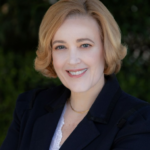New Year’s Day is a traditional window for evaluating accomplishments, setbacks, and lessons learned from the prior year. There’s also the time-honored custom of setting resolutions and making plans for the upcoming 12-months. Dry January can be part of that process.
In 2022, at least twenty percent of Americans participated in Dry January, which simply means they abstained from alcohol for that month. Another group reduced their intake by choosing the Damp January option, which focuses on limited and mindful imbibing.
Why are the numbers so high? Dry January offers an opportunity to take a break and reevaluate your relationship with alcohol. You may find, as many do, that you can manage your intake better afterward and reduce consumption long-term. In part, this is because 31-days provides sufficient time to reinforce a new habit.
Moreover, you may make this choice because numerous benefits become evident. These might include sleep quality, weight loss, saving money, elevated mood, and a reduced stress level. Choosing a sober month often results in enhanced focus and mental clarity, increased productivity, and a stronger connection to friends and family. Some participants realize they are less argumentative and avoid day-after regrets due to something they said or did. Also, although this respite won’t mitigate alcohol’s increased cancer risks, other health benefits occur more quickly. Examples of this include improved digestion and liver function, a fortified immune system, and lower blood pressure.
In addition, Dry January is an opportunity to develop clarity about how you use alcohol.
What is triggering you to drink? Are you avoiding conflicts rather than resolving them?
Avoiding feelings rather than addressing them? Or hiding under alcohol as an excuse for expressing underlying emotions such as anger or frustration?
If suddenly abstaining seems daunting, I suggest techniques such as using a buddy system, clearing the house of alcohol or putting it out of sight, sampling tasty mocktails (unless they trigger you to turn to alcohol), and using an app to track the money saved. You might focus on staying busy when you normally drink, perhaps by trying a new and fun activity or catching up with friends. The odds of success increase when you replace one pastime with another, rather than leaving a void and finding yourself with too much time on your hands.
The majority of Dry January participants do not have an alcohol use disorder (AUD), which is the modern term for alcoholism. AUDs fall on a spectrum, as do all mental health disorders. In other words, AUDs can be mild, moderate, or severe. The core of determining if you have an AUD is whether you continue to drink despite notable negative consequences, although failure to be able to fulfill your goal of staying dry in January would be a significant indicator as well. If you consume alcohol regularly at the severe level, Dry January is not recommended as stopping suddenly can cause seizures and other serious side effects.
If, as a result of the Dry January experiment, you realize you might have an AUD, treatment options depend on severity, your location, whether you are insured, and numerous other factors. As a first step, you might speak with your primary care physician, or seek out a doctor or therapist with substance use disorder expertise.
For most, though, Dry January is a reset. A chance to learn more about themselves, their relationship with alcohol, and how to live their best life.

